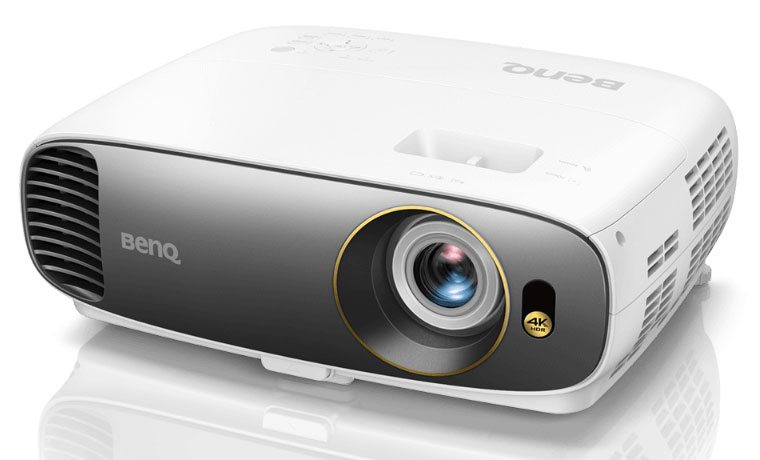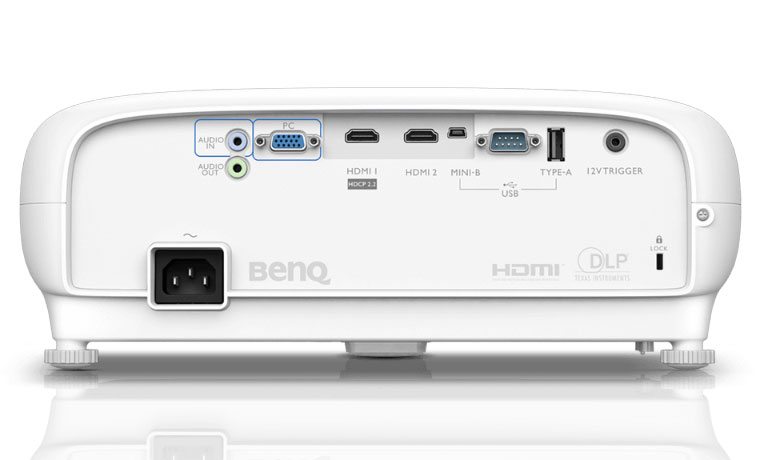The HT2550 uses a six-segment color wheel – RGBRGB. By comparison, those other under $2K DLPs all have a clear slice on their color wheels for whites, while their $2,495 siblings have RGBRGB like this BenQ.
This is worth a bit of “’splaining.”
Clear slices on a color wheel boost white brightness at the expense of being able to do accurate colors without sacrificing a lot of brightness. In English – more white lumens, less color ones. In other words, having those extra 800 lumens doesn’t mean you end up with any more lumens when calibrated for great color than the 2,200 lumen RGBRGB projectors. With clear slices, we tend to describe projectors as having what should be bright, intensive, pure reds, as something more red-wine colored, and yellows tend to be mustardy and a bit green.
Drop the brightness enough, and those colors clean up. Is there any benefit? Only when you don’t care about having the best color, and need maximum brightness. Thus, we sometimes call the 4K UHD’s with clear slice color wheels home entertainment, while those with RGBRGB are home theater. Makes sense!
And that’s why, in the title, I refer to the HT2550 as a home theater projector, not home entertainment. It’s a qualitative difference.
The BenQ HT2550 delivers 2,200 lumens and that RGBRGB, and 4K content with HDR support, for $1,995, while those others charge $500 more for similar. Now, other features are different, such as lens and detail enhancement, which, of course, is why we do the reviews.
As a side comment, since I haven’t been able to verify it, BenQ’s spec sheet doesn’t mention the color wheel speed. That’s an issue that relates to those of us who see the Rainbow Effect (RBE). The potentially good news – BenQ has a tradition of offering faster color wheels (less RBE) than most of the competition at any given price point. So, I would expect their color wheel speed to be at least as fast as the competitions’.
Speaking of which, BenQ has promised us one of the first review units to land, so we are looking forward to reviewing it, and publishing by mid December, but definitely before Christmas-December at the latest.
Update 11/18: I just learned that I may get a first look at an HT2550 due to BenQ folks stopping by around 12/7, but that's not confirmed.
The only downside I see so far, people, is that you won’t be able to have one of these under your Christmas tree, as first shipments are scheduled for January 2018. Still, no reason why you can’t be using a BenQ HT2550 at your upcoming Super Bowl party!



